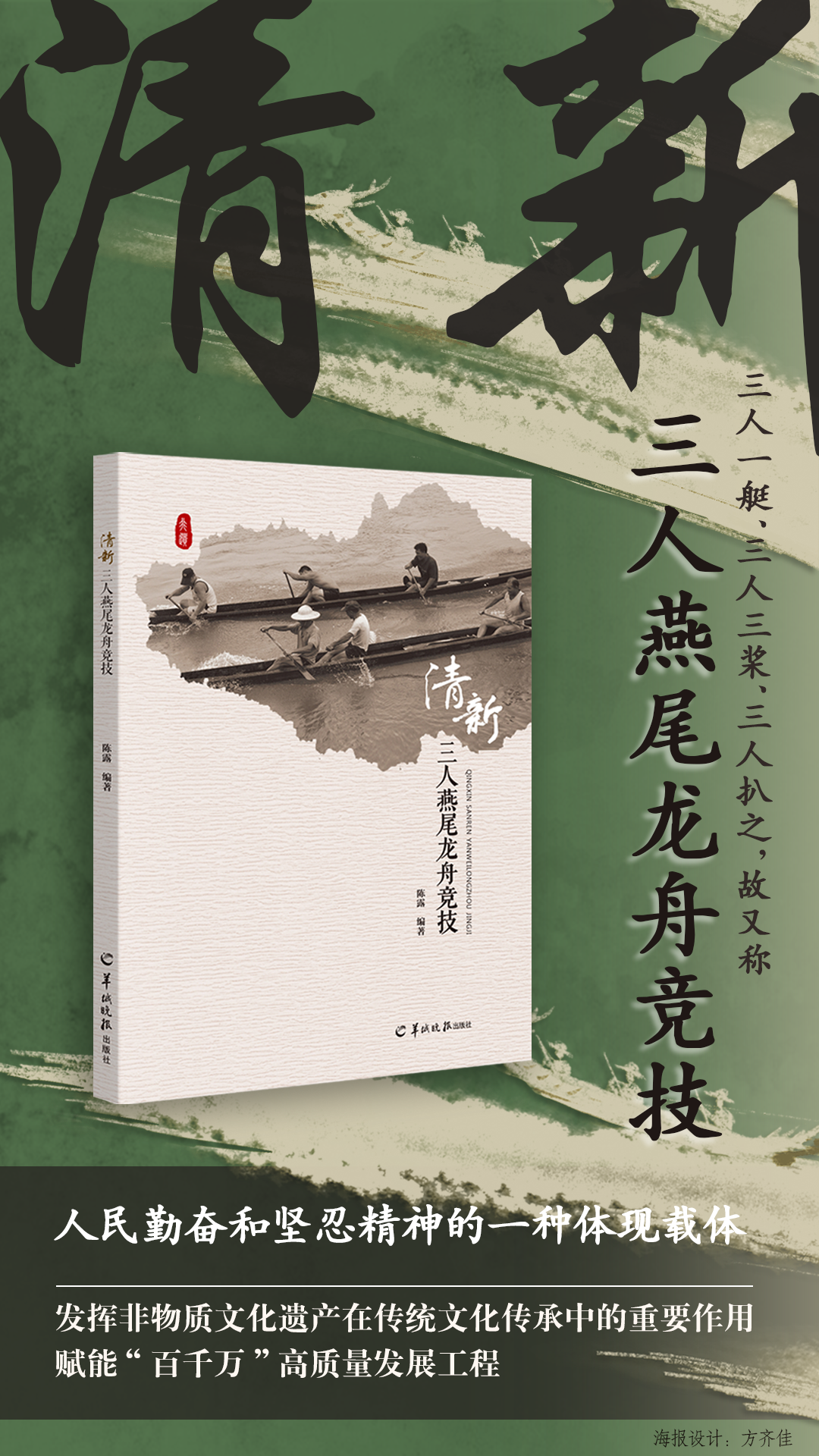
As the Dragon Boat Festival approaches, the drums of the dragon boats drift in every corner of the land of Guangdong with the fragrance of rice dumplings, and the lively “Dragon Boat Season” gradually kicks off. Among many dragon boats of different shapes, the “Swallowtail Dragon Boat” has become the most heartwarming Dragon Boat Festival memory of fresh people with its unique local characteristics.
About the origin of “three-person swallow-tailed dragon boat racing”, although the Qingyuan County Chronicle of the Republic of China said that “there are also small boats, and three or five people cut them away, and there is no dragon shape, this is purely a fighting drama and a legacy of Yangzhou”, it was found through field investigation that its formation is related to the unique local geographical environment and folk customs.

There are many legends about the origin of “Three-person swallowtailCinemaDragon Boat Racing”, and the four representative ones are as follows.
1. The Origin of Labor
The “Huazi·Qi Suxu” says: “The Hu people are on horses, while the Yue people are on boats.” In ancient Lingnan, Babaylan, were mostly water network areas, and people often used boats to travel, and used boats as production tools and transportation. People row boat competitions during the labor of catching fish and shrimps or during leisure time, integrating entertainment in labor production and leisure. This is the prototype of the ancient competition of “Three-person swallowtail dragon boat racing”. Shantang Town is close to Beijiang River, located in a low-lying area, mostly continental areas, and the water network is crisscrossing. Floods and floods are year by year.ma has it. Whenever the rice harvest season is over, it is mostly during floods. In the sixth year of Guangxu in the Qing Dynasty, Komiks’ Qingyuan County Chronicles said: “In the continental land was baptized and drought, but it was more so than the Komiks. When it was overflowing in the river, those who ploughed Babaylan would lose a lot.” In order to facilitate the harvest of rice and other crops, ordinary people could only carry a small boat to travel in the fields and reach out to harvest rice and crops exposed to the water. Over time, in order to grab food with the God of Heaven and reduce losses, between villages and villages, rowing activities were formed between people of the tribe.
2. The Origin of the Boat Soldier
Shantang Town, Qingxin District, Shijiao Town and Longtang Town in Qingcheng District are located in the middle and lower reaches of the Beijiang River and are the throat of the waterway. During field surveys, we listened to local old people telling stories, saying that this kind of small boat was a boat riding by sailors (boat soldiers) in the past. There were few people and fast boats, which were easy to attack the enemy. The locals introduced that this was related to the Saihe boat, and it was also related to the Qin Dynasty and the Western Han army heading south to attack Nanyue through the Xijiang River.
The fresh “three-person swallow-tailed dragon boat” is similar to the “five-person dragon boat” in the Pearl River Delta in terms of boat shape, materials and competitive methods, and is the same as the “Three or Five-person Dragon Boat” in the Republic of China version of the “Cinema Cinema” records. The former three people took them off and were active in the middle and lower reaches of the Beijiang River. The latter group is in groups of five, and is popular in Foshan and Zhongshan areas, especially in Baini Town on Xijiang.
Whether this long-shaped boat “three-five-man dragon boat” is related to the two-way interaction and exchange of cultures in Beijiang and Xijiang, and whether it is related to the Southern Ark soldiers during the Qin and Han dynasties, it still needs to be further studied.
3. Origin theory of welcoming gods and exorcising ghosts
Most of the villages in Shantang Town are built next to the inland river. In ancient times, whenever floods were flooded, “water ghosts” became life-threatening.The main culprit is the culprit. In order to drive away the “water ghosts”, the villages spontaneously organized a “dragon-extinguishing team of swallowtail boats”, and young and middle-aged people joined the battle, supporting their own dovetail boats from the upper reaches of the river to the downstream of Komiks, and set off a large number of Komiks firecrackers to drive away ghosts.
4. The Origin of Games
Ancient games are an important part of the origin of human culture. The three-person Babaylan swallowtail dragon boat racing event has the original game elements Cinema. Locals often use the word “Komiks to play”. It means “playing for a while Babaylan‘s dragon boat”, and Cinema‘s “playing” reflects the psychology of the game. Game prizes have also changed to competitive prizes. In order to mobilize the motivation to participate in games (competitiveness), the prizes are becoming more and more abundant, and the amount of prizes is also increased as the people’s living standards gradually improve.
(This article is excerpted from “Fresh Three-person Swallowtail Dragon Boat Racing”)
Provided by | Editor Yang Yingyu | Source of Liang Xingwu | Yangcheng Evening News Publishing House